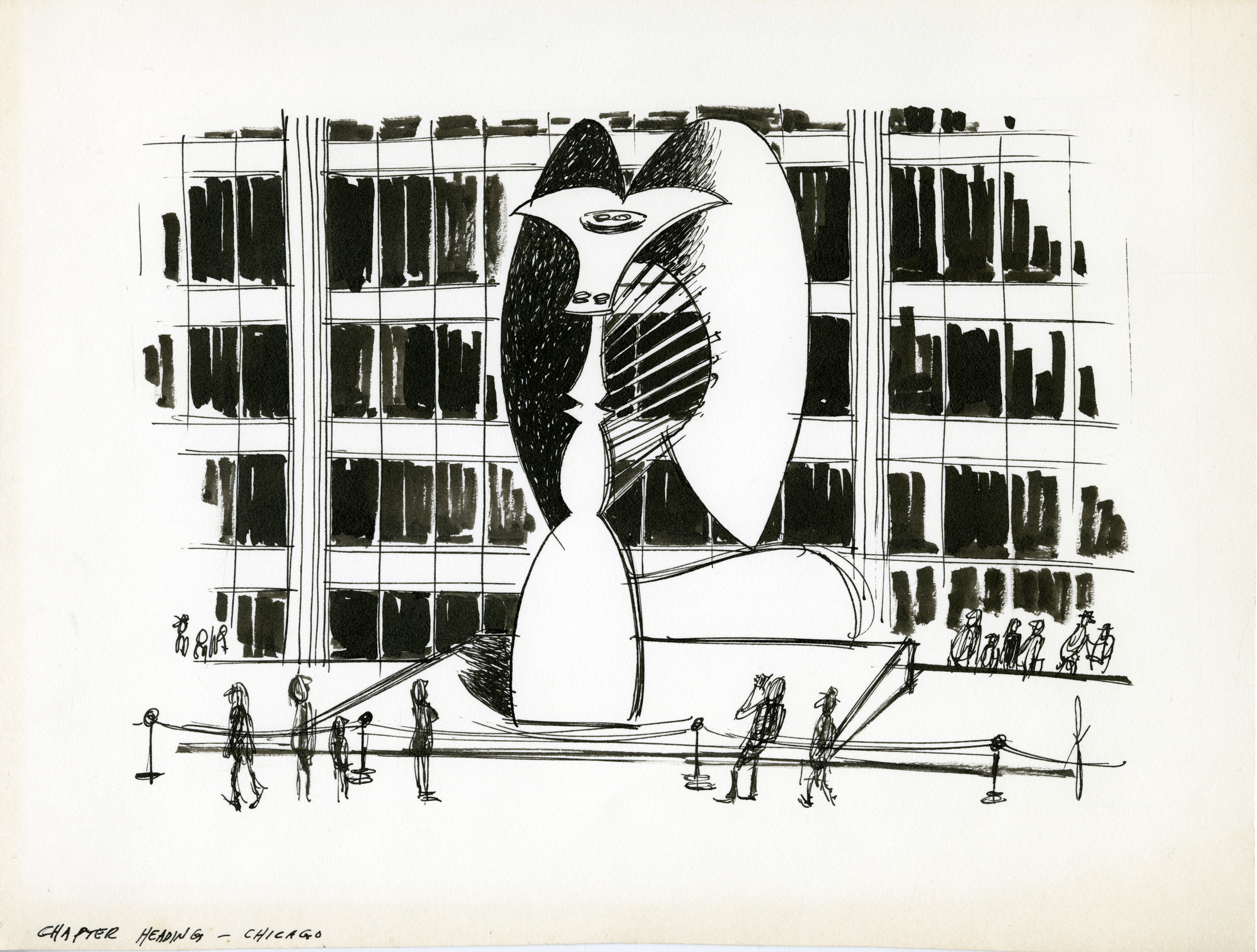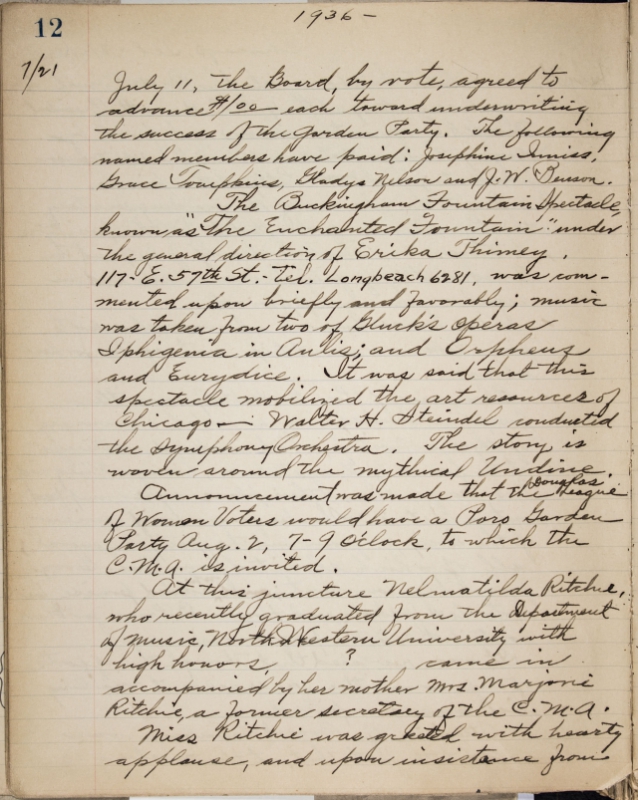Columbia College Chicago
Chicago collections are held at two locations at Columbia College Chicago, in the College Archives & Special Collections and at that Center for Black Music Research. Details about each location are below.
College Archives & Special Collections
 College Archives & Special Collections holds more than a century of institutional records in physical and digital formats from Columbia College Chicago and manuscript collections in support of College curricula. Manuscript collections include: the Chicago Anti-Apartheid Movement; audio pioneer Richard C. Heyser; historic Chicago institution of higher education Sherwood Conservatory of Music; newspaper professionals group Chicago Press Veterans/Chicago Journalists Association; the local branch of the national civic and social justice promoter NCCJ/Chicago Center for Cultural Connections; the century old Chicago public speaking group Phi Sigma; the Chicago nonprofit gallery of art, Gallery 312; and work of editorial cartoonist John Fischetti. Other Chicago-related collections include those of photojournalist and author Archie Lieberman; composer and bassist Doug Lofstrom; creative director and author Laurence Minsky; film production manager Robert Enrietto; radio pioneer Clyde Caswell; fashion director Nena Ivon; and composer, educator, and conductor William Russo, among others.
College Archives & Special Collections holds more than a century of institutional records in physical and digital formats from Columbia College Chicago and manuscript collections in support of College curricula. Manuscript collections include: the Chicago Anti-Apartheid Movement; audio pioneer Richard C. Heyser; historic Chicago institution of higher education Sherwood Conservatory of Music; newspaper professionals group Chicago Press Veterans/Chicago Journalists Association; the local branch of the national civic and social justice promoter NCCJ/Chicago Center for Cultural Connections; the century old Chicago public speaking group Phi Sigma; the Chicago nonprofit gallery of art, Gallery 312; and work of editorial cartoonist John Fischetti. Other Chicago-related collections include those of photojournalist and author Archie Lieberman; composer and bassist Doug Lofstrom; creative director and author Laurence Minsky; film production manager Robert Enrietto; radio pioneer Clyde Caswell; fashion director Nena Ivon; and composer, educator, and conductor William Russo, among others.
Center for Black Music Research (CBMR)
 The Center for Black Music Research (CBMR), a comprehensive research collection covering black music of the U.S. and the African diaspora, includes books, periodicals, sound recordings, printed music, photographs and videotapes, manuscripts and archival materials, and a comprehensive collection of theses and dissertations. Among the most important archival collections are several that have direct connections to Chicago musicians, organizations, cultural institutions, and the musical styles and genres created in Chicago. The holdings support research by composers, performers, conductors, scholars, teachers, the general public, and students. Researchers from around the world use the collections, resulting in books, periodical and encyclopedia articles, program notes and CD liners, and the development of teaching curricula. Researchers from around the world use the collections, resulting in books, periodical and encyclopedia articles, program notes and CD liners, and the development of teaching curricula.
The Center for Black Music Research (CBMR), a comprehensive research collection covering black music of the U.S. and the African diaspora, includes books, periodicals, sound recordings, printed music, photographs and videotapes, manuscripts and archival materials, and a comprehensive collection of theses and dissertations. Among the most important archival collections are several that have direct connections to Chicago musicians, organizations, cultural institutions, and the musical styles and genres created in Chicago. The holdings support research by composers, performers, conductors, scholars, teachers, the general public, and students. Researchers from around the world use the collections, resulting in books, periodical and encyclopedia articles, program notes and CD liners, and the development of teaching curricula. Researchers from around the world use the collections, resulting in books, periodical and encyclopedia articles, program notes and CD liners, and the development of teaching curricula.

